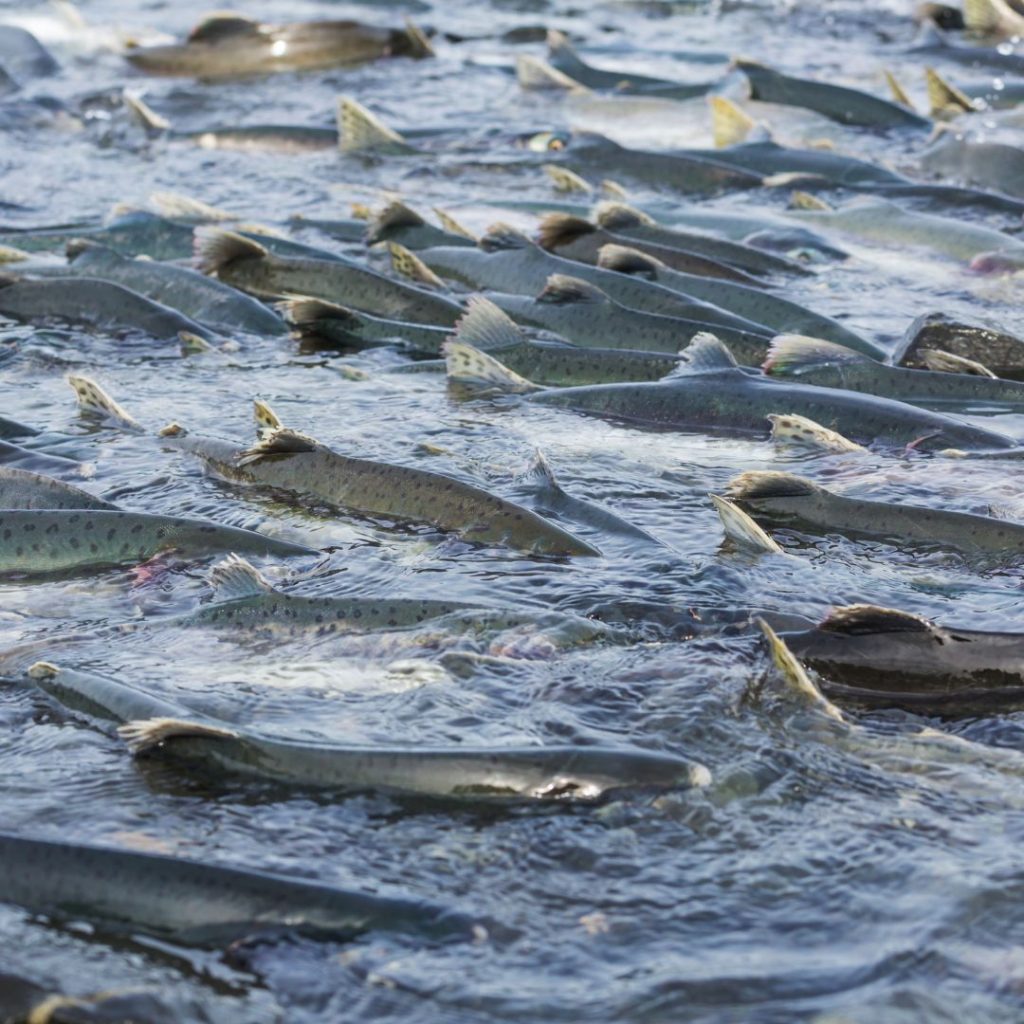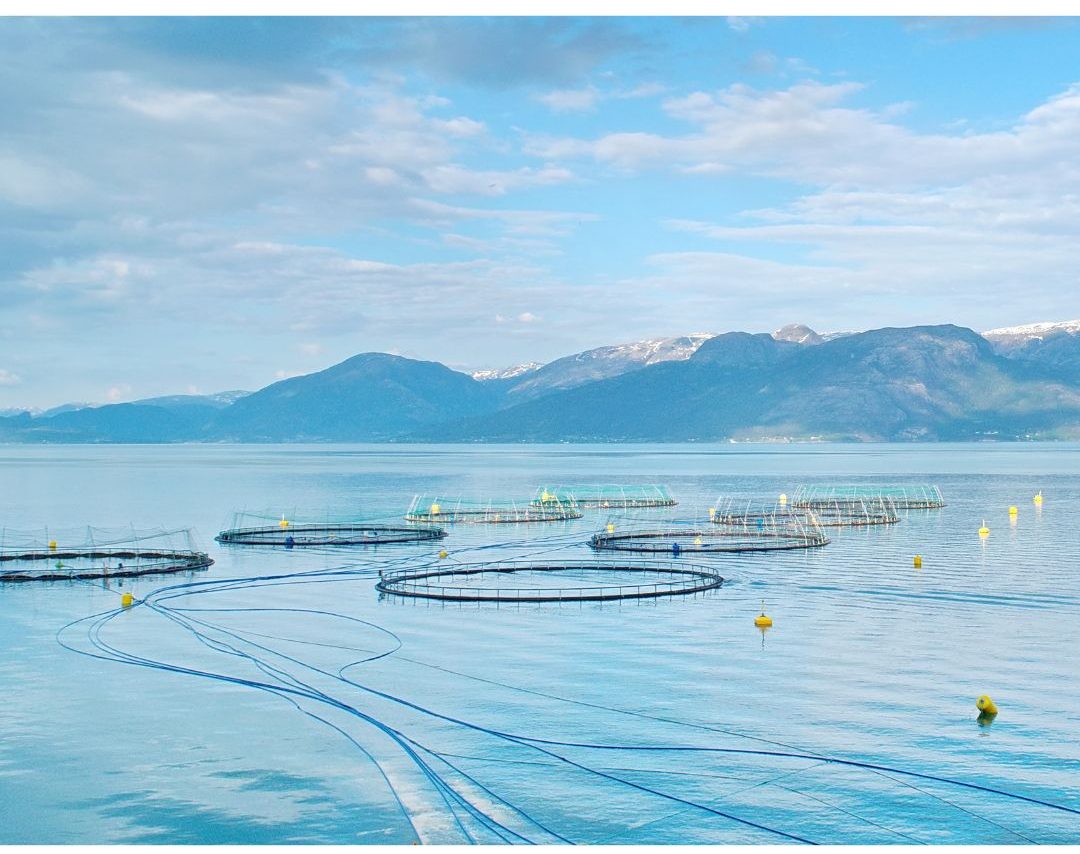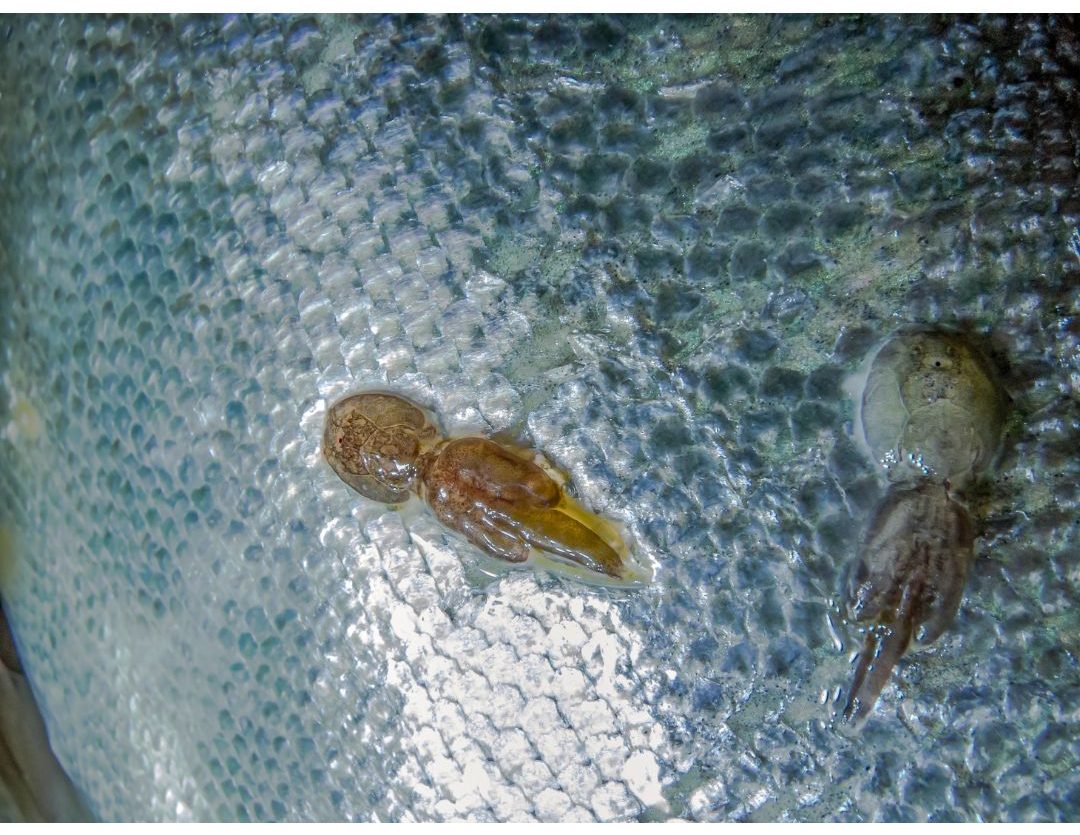Why we should say no to salmon

In recent years, salmon has become one of the most popular fish we eat. While it was once an exclusive delicacy, we are currently encountering an inflationary trend. With many negative effects on the environment and our health. Most of the salmon we buy comes from aquacultures. However, these use a cocktail of antibiotics and pesticides to rear the animals in much too small breeding tanks in the sea. The fish feed they are fed is also often contaminated with heavy metals and pesticides, which accumulate in the animals' fat layer.
A real boom
Sushi and maki with salmon, salmon bowls, smoked salmon, fresh salmon, salmon rolls and much more. The boom has led to a rapid increase in consumption in Germany of around 25% in the last ten years - and certainly the same in Austria. After wild salmon populations declined sharply due to overfishing and environmental problems, more and more salmon aquacultures were established, particularly in Norway, which accounts for around 50% of global salmon demand, but also in Chile, Scotland and Canada. Millions of these predatory fish are kept in breeding tanks that are far too small. When they escape from their breeding tanks - as has happened millions of times in Chile and Iceland - they endanger wild populations and damage ecosystems.

Aquaculture: solution to overfishing has itself become an environmental problem
Already 90% of all salmon comes from aquaculture. However, fish farming, which is often described as environmentally friendly, is actually an ecological disaster. The extremely cramped and inappropriate conditions in which the fish are kept lead to an increase in diseases. The salmon suffer from sea lice, pancreatic diseases and the infectious salmon anemia virus, which has spread in northern Europe. As a result, the animals are given vast amounts of antibiotics and pesticides, which pollute the entire ecosystem.

One of these pesticides found in salmon is called ethoxyquin and it prevents the fish food from going moldy. As the pesticide produced by Monsanto can no longer be used for agricultural purposes, a substitute had to be found: Fish food!
These toxins, dead animals and waste from the pools cover the seabed many meters high, polluting it and endangering other marine animals. Furthermore, the faeces and pesticides outgas their pollutants there. The salmon eat this and we in turn eat the fish. For all these reasons, farmed salmon is now considered the most toxic food in the world!
This garbage also leads to the formation of highly toxic algae. As recently as 2016, such algae led to the mass mortality of other fish and marine animals in Chile. The degradation of these pollutants also produces bacteria that reduce the oxygen content in the water and endanger other marine animals. In addition to the dramatic impact on the ecosystem, local fishermen are also losing their livelihoods.
In Iceland, salmon are already bred in large tanks on land. This has several advantages: There are no salmon lice, the waste water can be filtered and the animals do not escape, according to a report in the NZZ.
Problematic fish feed production
To obtain 1 kilogram of farmed salmon, you would need 1.5-8 kg of wild fish. These often come from the Baltic Sea, the most polluted sea in the world. In addition to heavy metals and radioactive material, fertilizers from agriculture are also discharged into the Baltic Sea from the nine neighbouring countries.
Today, for economic and resource-related reasons, salmon feed generally consists of only 25% wild fish (in the form of fish meal and fish oil), 71% soy or rapeseed and 4% other additives. Around 500 grams of soybeans and 660 grams of fish are needed to produce one kilo of salmon. Last but not least, the production of fishmeal and soy as feed for farming contributes massively to overfishing of the oceans and deforestation.
The widespread ASC (Aquaculture Stewardship Council) certification system has also not led to greater sustainability or better husbandry conditions, but merely gives consumers a false sense of security, writes Greenpeace and has therefore long been calling for a rapid switch to domestic organic fish in retail and gastronomy as well as clear labeling of fish and fish products. Consumers should pay closer attention to declarations such as husbandry, feeding and origin.
Loss of nutrients due to breeding
Industrial salmon farming has led to fatal consequences: Nutrient deficiencies and an excess of omega-6 fats. Wild salmon contains 5-7% fat while farmed fish can contain up to 34%. The reason for this is the use of processed, high-fat plant feed because it is cheaper. This feed consists mainly of wheat flour, soy flour, corn meal, fish oil and animal fats and ground animal remains.
Added to this is the radically altered ratio of omega-3 to omega-6 fatty acids, with the omega-6 proportion increasing massively.
Documentary film "Fillet-Oh-Fish"
In his film "Fillet-Oh-Fish", Nicolas Daniels takes a critical look at the global fishing industry and uncovers shocking new facts about aquaculture. Among others, Kurt Oddekalv, a renowned Norwegian environmental activist, has his say and considers salmon farming to be "a disaster, both from an ecological and a health perspective". He himself no longer eats salmon.
Alternatives to salmon
It is always said that you should eat fish twice a week. However, this is not so easy nowadays because many fish species are overfished and contaminated with heavy metals and much more. Even though we can find salmon in every supermarket and restaurant, we should avoid it unless it is wild salmon (which has already declined sharply due to demand) or organically farmed salmon. If you want to eat fish, you should choose local farmed fish from organic farms. Here in Germany, this would be catfish, carp, trout and char, which are obtained from sustainably managed farms.






